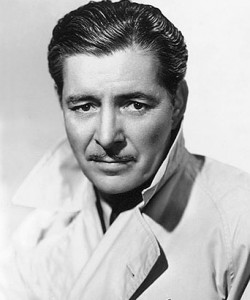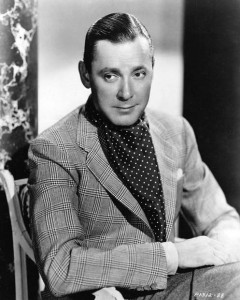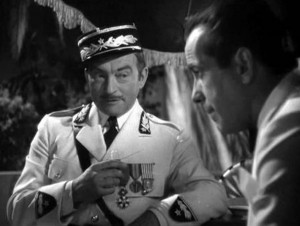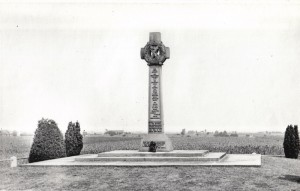London Scottish Film Stars
Seemingly one just has to ferret about the internet and much will be revealed simply by coming up with the right combination of search terms. Recently I was reviewing none other than Basil Rathbone’s Great War service, with the Liverpool Scottish, when I learned of three actors who served during the Great War with the London Scottish (the 14th London Regiment). These fine fellows include Ronald Colman, Herbert Marshall, and Lawrence Rains all who qualified for membership in the London Scottish Old Comrades’ Association.
Ronald Charles Colman (Private – 2148)
Silver War Badge (Honourably discharged due to wounds)
Wounded 31 October 1914
While attending boarding school in Littlehampton he discovered acting. Prior to the Great War he was a member of the West Middlesex Dramatic Society and made his first stage appearance in 1914. He joined the London Scottish, a unit of Britain’s Territorial Army, in 1909 and went with them to the Western Front in 1914. Colman was seriously wounded during the “Race to the Sea” between the river Douve and the Comines–Ypres Canal, Battle of Messines (Flanders, Belgium), 31 October 1914, being hit in the ankle by shrapnel. The injury left him with a limp that he tried to hide throughout his acting career. As a result of the wound he was invalided out of the British Army in 1915 and received the Silver War Badge. Colman returned to stage acting in 1916 appearing in The Maharani of Arakan, and The Misleading Lady. In 1917 his fortunes continued and he appeared in Partnership and Damaged Goods, and in 1918 The Little Brother and Bubble. His first film appearance was in 1917. Colman received an Academy Award and a Golden Globe Award as Best Actor in the 1947 film, A Double Life.
Colman appeared in several classic films including A Tale of Two Cities (1935), and The Prisoner of Zenda (1937). In 1956 he appeared with David Niven in the frequently replayed film, Around the World in 80 Days. Apart from receiving an Academy Award he was nominated on three other occasions for Bulldog Drummond (1929), Condemned (1930) and Random Harvest (1942). Apart from these honours and two stars on the Hollywood Walk of Fame (one for film and the other for television) his distinguished contributions to the art of film were honoured with the presentation of the George Eastman Award. (see http://www.eastmanhouse.org/museum/awards.php)
Herbert “Bart” Brough Falcon Marshall (Private – 8426 / 514221 )
Silver War Badge (Honourably discharged due to wounds)
Leg amputated during the Great War
Born into an acting family his parents, Percy F. Marshall and Ethel May Turner were stage actors. His godfather was the comedic Shakespearean actor Lionel Brough. Although Bart was not at first interested in theatre, after University graduation, he became involved in working backstage in theatre productions eventually trying his hand at performing before live audiences.
The Great War led Bart to the Western Front and at Arras, France in 1915 he was shot by a sniper in the right knee. After several surgical procedures the leg could not be saved and Doctors performed an amputation whereby the leg was removed near to his hip. After more than a year in hospital he chose to return to acting having learned to walk again with a prosthetic limb. Similar to many who have undergone similar procedures Bart suffered from “phantom pain’ for the rest of his days as well as discomfort from the prosthetic device itself. During the Second World War, Bart dedicated himself to the rehabilitation of injured soldiers especially those who had suffered similar injuries.
Bart’s stage acting career began in 1911 when he made his debut in The Adventure of Lady Ursula and continued to act until the Great War. Following the Armistice Bart’s success continued and in 1927 he appeared in the silent film, Mumsie. Hollywood was to follow two years later and in 1930 he appeared in Alfred Hitchcock’s Murder, following up the next year with a performance for Paramount Studios. Bart became a Hollywood leading man appearing in several romance films with Marlene Dietrich, Greta Garbo, Katherine Hepburn and many others. In all he appeared in some 75 films and in 1960 received a star on the Hollywood Walk of Fame.
William Claude Rains (Corporal – 6842 / 512891)
Gassed (Date unknown)
Commissioned Bedford Regiment 1917
A four time Academy nominee for the Best Supporting Actor Claude Rains starred in many classic films including The Invisible Man (1933), The Adventures of Robin Hood (1938), Mr. Smith Goes to Washington (1939), The Wolf Man (1941) and Casablanca (1942).
Claude first began acting at the age of 11 in Nell of Old Drury (circa 1900) and later taught at the Royal Academy of Dramatic Art where his students included the legendary actors Lawrence Olivier and John Gielgud. During the Great War Rains was nearly blinded during a gas attack, an injury that continued to plague his affected eye throughout his life.
Rains’ first Academy Award nomination occurred for the 1939 film, Mr. Smith Goes to Washington. Other nominations were to follow including, Casablanca (1942), Mr. Skeffington (1944) and Notorious (1946). Like his fellow London Scottish veterans, Ronald Colman and Bart Marshall, Rains also received a star on the Hollywood Walk of Fame. In addition Rains received a Tony Award (Theatre) in 1951 for the best performance by a leading actor for Darkness at Noon.
Rains also appeared in two David Lean’s films, Passionate Friends (1949) and Lawrence of Arabia (1962). His last role was in 1965 when he played Herod the Great in The Greatest Story Ever Told.






Comments